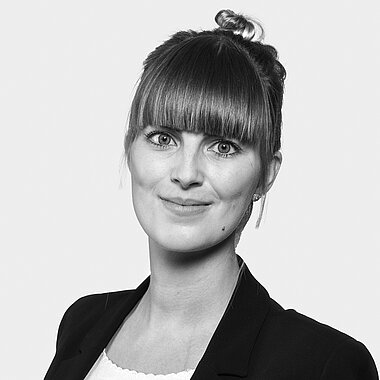Find out today what the legal world will be talking about tomorrow.
11.04.2023
A declaration of war against greenwashing? The proposal for the European Green Claims Directive at a glance

On 22.3.2023, the EU Commission presented the long-awaited proposal for a "Green Claims Directive". It complements the "Directive on Empowering Consumers for Environmental Change" already presented last year and aims to tackle greenwashing in advertising.
In studies, the EU Commission had found that 53 % of the verified green claims were vague, misleading or unsubstantiated. According to Virginijus Sinkevičius, the EU Commissioner for the Environment, the proposed directive should help consumers make informed purchasing decisions and reward companies that make genuine environmental efforts.
Even though it will still take a few years until the new rules apply, it is already clear: the conditions for green advertising will become much stricter in the future. In particular, the prior certification requirement for green advertising claims is a novelty in unfair competition law and will make environment-related advertising much more time-consuming and costly in the future.
We answer the most important questions for advertisers:
1) What are green claims?
Green claims - green advertising statements - are all advertising statements related to the environment and sustainability - both in relation to products and services and to companies themselves. These include, for example, claims such as #climate-neutral, #CO2-reduced, #recyclable, #ocean-friendly or #bee-friendly. The Green Claims Directive concerns explicit green advertising claims in text form or sustainability seals. In addition to specific advertising claims, these can also be product or brand names with a green coating. However, nature-related images or colours without a textual statement are not affected.
2) What does the Green Claims Directive change for advertising companies?
Until now, advertising with green environmental claims was only regulated by the general prohibition of misleading statements in the Unfair Competition Act (UWG). In future, much stricter requirements will apply to green advertising claims. The most important change is that all green advertising claims must be certified in advance by an independent agency. This is unique in unfair competition law and goes much further than the regulations for health-related advertising in the Health Claims Regulation. A comparable certification requirement exists, for example, for the CE marking of certain safety-relevant products or the introduction of medical devices into the EU market, where a conformity assessment procedure must be carried out by a so-called Notified Body.
3) Who does the Green Claims Directive apply to?
The new directive will apply to all companies that advertise with green claims or use eco-labels in the EU. The only exceptions are micro-enterprises with fewer than 10 employees and less than two million euros in annual turnover. However, micro-enterprises are of course still bound by the general prohibition of misleading advertising in the UWG. For small and medium-sized enterprises, the EU wants to provide technical, organisational and financial support in implementing the new regulations.
4) What plans does the EU Commission have for explicit green advertising claims?
In future, environmental advertising claims may no longer be published without prior verification by an independent verification body. For this, companies must prove on the basis of generally accepted scientific evidence that the claim applies to the product or company. In addition, environmental claims that assess the overall environmental impact of a product in relation to factors such as biodiversity, climate or water consumption will regularly be inadmissible.
5) What are the requirements for certification of green advertising claims?
The proposed directive sets a number of requirements for the substantiation of green claims. The basis of any verification must be scientific evidence. Among other things, it is to be verified whether the claim refers to the whole product or only to individual components. In addition, companies must show how their product performs significantly better than comparable products from an environmental point of view. Aspects such as the life cycle of products (from raw materials to end of life) or possible conflicts of objectives with other environmental impacts are also important. Once the test has been completed, the inspection body issues a certificate that will then be valid throughout the EU.
6) Where can companies get this certification and how much will it cost?
It is not yet known which inspection bodies in Germany will be responsible for certification. Basically, they must be independent testing bodies authorised by the respective Member State. For medical devices in Germany, these are the so-called Notified Bodies, in particular the TÜV. For certification, the EU Commission calculates costs per claim of 500 euros (for simple claims such as "recyclable"), 8,000 euros (for complicated product claims) up to 54,000 euros (for company-related claims). In addition, there are internal company costs for scientific studies etc.
7) How must green advertising claims be communicated in the future?
The guidelines place particular emphasis on comprehensive information: detailed information, scientific evidence and the certificate of the independent testing body must be made available together with the claim, either physically on the product or by means of an attached link or QR code. This is likely to be the moment of glory for the asterisk.
8) Do special features apply to the #climateneutral claim?
According to the EU Commission, experience shows that the claim #climateneutral is often unclear and misleading. In Germany, too, the #climateneutral claim is the focus of case law, with numerous court cases currently underway. The proposed directive now contains some special regulations for advertising with climate neutrality. Among other things, companies are to explain to what extent they reduce CO2 emissions themselves and to what extent they "only" compensate. Furthermore, requirements regarding the correctness of offsets and their crediting will be introduced.
9) Comparative green advertising - will it still be possible in future?
The proposed directive also contains rules on product and supplier comparisons with regard to environmental impacts. Comparisons must be fair and based on equivalent data.
10) What will change in connection with sustainability labels and eco-labels?
More than 230 different eco-labels exist in the EU, about half of them, according to the EU Commission, with insufficient or completely missing verification mechanisms. Therefore, public labels may in future only be developed at EU level. New private schemes will only be allowed if the label pursues more ambitious environmental goals than previous labels and if they have been approved in advance by an appropriate body. In addition, all eco-labels must be transparent and regularly verified and audited by third parties. Furthermore, the proposed directive sets a number of requirements for the certification mechanisms of sustainability labels (including accessible information, scientific basis and the existence of complaint mechanisms).
11) What is the threat of non-compliance with the planned regulations?
Violations will have the usual consequences under competition law: competitors and associations such as the Wettbewerbszentrale can issue warnings and demand injunctive relief; competitors can also claim damages. What is new is that a fine of up to 4% of a company's annual turnover can also be imposed for violations of the new environmental regulations. And the new possibility for consumer organisations to take class legal action should also play a greater role in the future.
12) From when does the Green Claims Directive have to be observed?
The good news is that so far it is only a proposal for a directive. Hence it will still take some time before the new rules apply. The proposed directive is now going through the normal legislative process at EU level and must be approved by the Council and the EU Parliament. In principle, adjustments or mitigations are still possible, although experience shows that the EU Parliament often gives climate protection measures the go-ahead. This process should take about a year. The member states then have two years to transpose the directive into national law. It is therefore unlikely that the new regulations will apply before the beginning of 2026.
13) What else applies to green advertising besides the Green Claims Directive?
The Green Claims Directive is part of a large package of measures by the EU to combat greenwashing more strongly (in connection with the so-called Green Deal). In March 2022, the EU Commission has already presented the planned directive to strengthen consumers for ecological change. This is to expand the existing UGP Directive and concerns in particular general environmental claims such as #environmentally friendly, #green or #ecological. Environmental impacts will be added as a general new misleading aspect. In addition, this directive will add further business practices to the so-called black list. Prohibited per se in future will therefore be, among others:
Use of sustainability labels that are not based on a certification standard or implemented by public authorities. General environmental claims if a company cannot demonstrate an outstanding environmental impact of its product/company Environmental claims relating to the whole product, although only one aspect is concerned
14) Will it be possible to advertise with green claims at all in the future?
In a first statement on the proposed directive, the DIHK already speaks of overregulation. It criticises that small and medium-sized enterprises in particular would no longer be able to afford green advertising in future because the certification costs would be too high. And indeed: the prior certification of advertising claims is a real novelty in European fair trading law. For advertising companies, the currently prevailing legal uncertainty due to diverging case law on individual claims will be eliminated. However, compliance costs are likely to increase. Overall, there is a real danger that the new directive will not only put an end to greenwashing, but also to green advertising as a whole.
15) How can companies prepare now?
Even if it will still take a while until the proposed directive becomes law, companies can prepare themselves now. Because even now, education is key! Green advertising claims such as #climateneutral should be explained in detail with asterisks or links to information websites. This significantly reduces the risk of warnings. And of course, if the worst comes to the worst, companies should already be able to prove with scientific studies, market comparisons, etc. that their claim is actually true. Good preparation here should make certification easier in the future.
Authors


